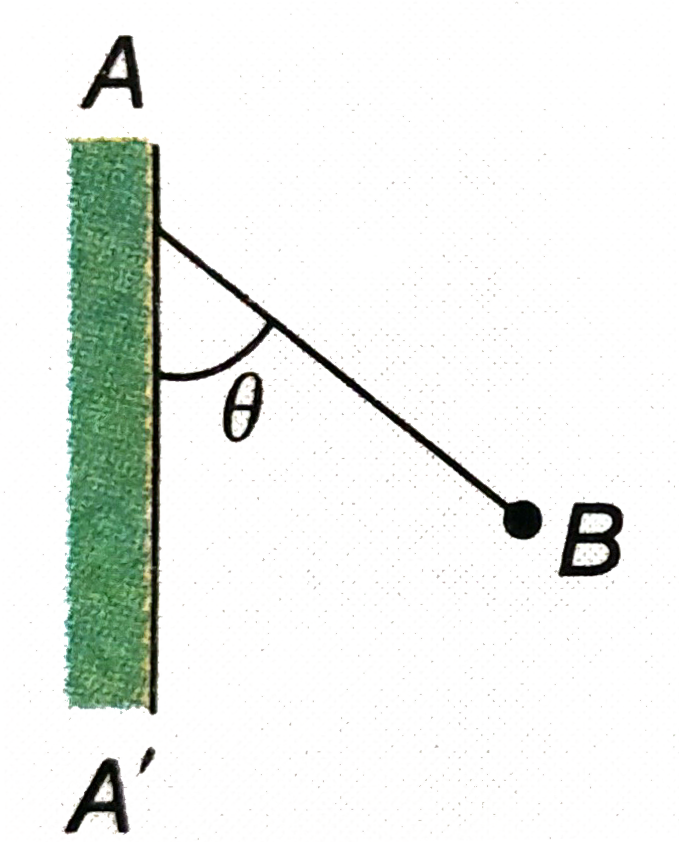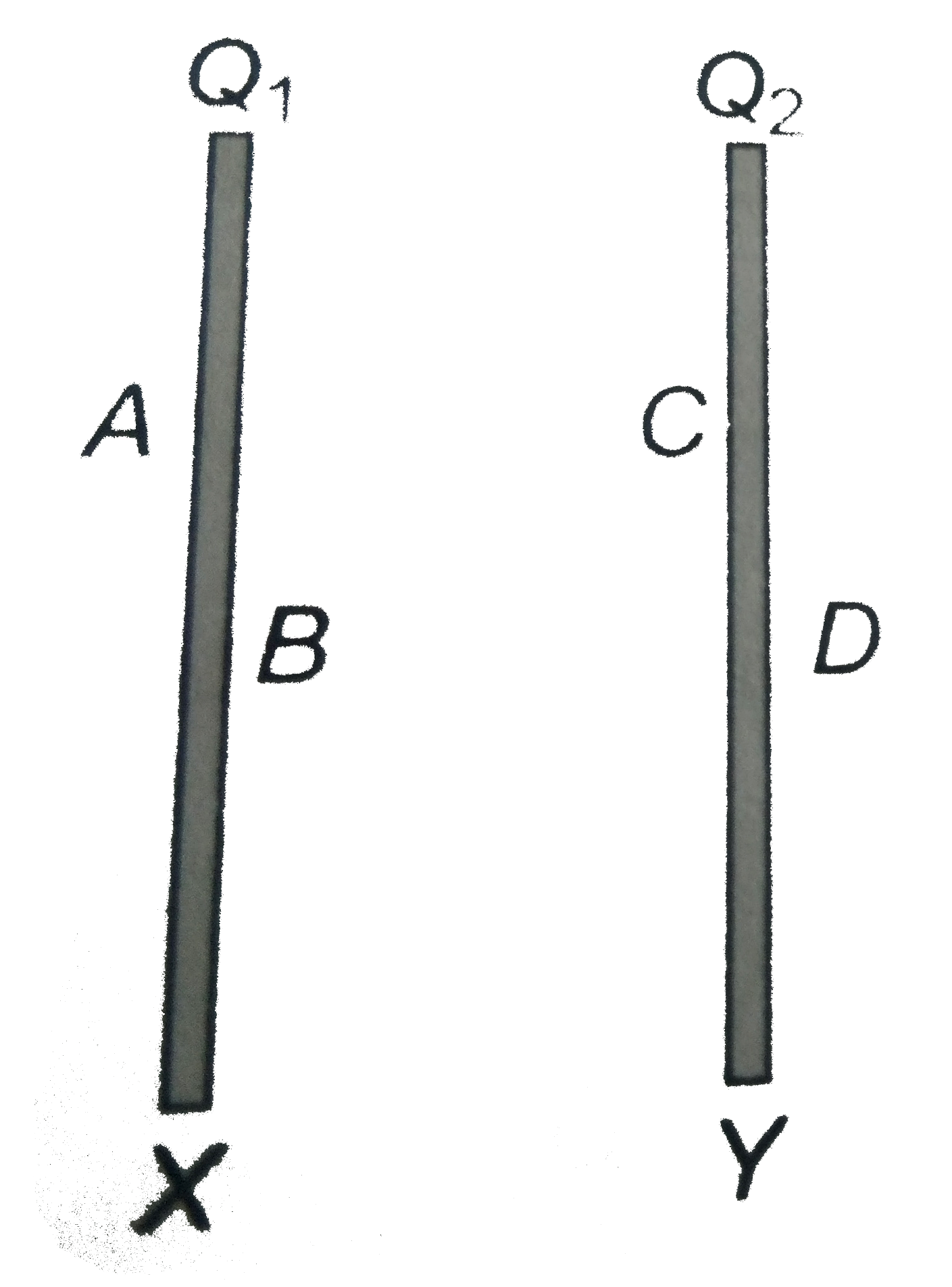Define surface density of electric charge.
Two large conducting spheres carrying charges Q1 and Q2 are brought close to each other. Is the magnitude of the electrostatic force between them exactly given by Q1Q24πε0r2 where r is the distance betwen their centres?Solution in Bengali
Ist part: Surface charge density is the amount of electric charge per unit surface area.
2nd part: Na
Topper's Solved these Questions
- BOOK - CHHAYA PUBLICATIONCHAPTER - ELECTRIC FIELDEXERCISE - EXAMINATION ARCHIVE (WBJEE)13videos
ELECTRIC FIELD
- BOOK - CHHAYA PUBLICATIONCHAPTER - ELECTRIC FIELDEXERCISE - EXAMINATION ARCHIVE ( JEE MAIN )3videos
ELECTRIC FIELD
- BOOK - CHHAYA PUBLICATIONCHAPTER - ELECTRIC FIELDEXERCISE - ENTRACNCE CORNER ( INTEGER ANSWER TYPE )4videos
ELECTRIC FIELD
- BOOK - CHHAYA PUBLICATIONCHAPTER - ELECTRIC ENERGY AND POWEREXERCISE - CBSE SCANNER7videos
ELECTRIC ENERGY AND POWER
- BOOK - CHHAYA PUBLICATIONCHAPTER - ELECTRIC POTENTIAL EXERCISE - CBSE Scanner13videos
ELECTRIC POTENTIAL
Similar Questions
A line AA' is on a charged infinite conducting plane which is perpendicular to the plane of the paper. The plane has a surface density of charge σ and B is a ball of mass m with a like charge of magnitude q.B is connected by a string from a point on the line AA'. The tangent of the angle (θ) formed between the line AA' and the string is
 02:25View Solution
02:25View SolutionA long cylindrical shell carries positive surface charge σ in the upper half and negative surface charge −σ in the lower half. The electric field lines around the cylinder will look like figure given in (figures are schematic and not drawn to scale)
02:31View SolutionTwo charges 2Q and −Q are placed at the points (a,0,0) and (4a,0,0) respectively. With the two charges situated at the cenres, two spheres of radii 2a and 8a are considered. What is the ratio of electric flux through the surfaces of the two spheres?
02:03View SolutionA light bulb is rated 100 W for 220 V ac supply of 50 Hz. Calculate
the resistance of the bulb ,01:17View SolutionA test charge q is moved without acceleration along the path from A to B from B to C in electric field E as shown in fig.

(i) Calculate the potential difference between A and C.01:49View SolutionTwo large conduction spheres carrying charges Q_(1) and Q_(2) are brought close to each other. Is the magnitude of the force between them exactly given by Q_(1)Q_(2)//4piepsilon_(0)r^(2) . Where r is the distance between their centers.
03:14View SolutionAssertion: Two charges q_(1) and q_(2) are placed at separation r . Then magnitude of the force on each charge is F . Reason: Now a third charge q_(3) is placed near q_(1) and q_(2) . Then force on q_(1) and q_(2) remains F .
04:24View SolutionTwo large , parallel conducting plates X and Y , kept close to each other , are given Q1 and Q2(Q1>Q2). The four surfaces of the plates are A,B,C and D , as shown

(i) The charge on A is 12(Q1+Q2)
(ii) The charge on B is 12(Q1−Q2)
(iii) The charge on C is 12(Q2−Q1)
(iv) The charge on D is 12(Q1+Q2)04:43View Solutionदो आवेशों q1 तथा q2 के बीच लगने वाला कूलॉम बल, F=q1q2r2 है। एक बल का मान -
03:10View Solutionसावधानीपूर्वक उत्तर दीजिए
दो बड़े चालक गोले जिन पर आवेश Q1और Q2 है ,
एक -दूसरे के समीप लाए जाते है | क्या इनके बीच स्थिर वैद्युत बल का परिमाण तथ्यतः Q1Q24π∈0r2 द्वारा दर्शाया जाता है , जहाँ r इनके केन्द्रो के बीच की दुरी है ?02:41View SolutionTwo large conducting sphere carrying charges Q1 and Q2 are brought close to each other. Is the magnitude of the electrostatic force between them exactly given by Q1Q2/4π∈0r2, where r is the distance between their centres ?
01:17View Solutionयदि दो आवेशों q1 व q2 जो एक - दूसरे से दूरी r पर स्थित है के बीच लगने वाला बल F निम्नलिखित सूत्र द्वारा दिया जाता है :
F=14πε0×q1q2r2
तो ε0 का विमीय सूत्र ज्ञात कीजिए।07:40View SolutionA charge q_(1) is placed at the centre of a spherical conducting shell of radius "R" .Conducting shell has a total charge q_(2) .Electrostatic potential energy of the system is (A) (q_(1)^(2)+2q_(1)q_(2))/(8 pi varepsilon_(0)R) (B) (q_(2)^(2)+2q_(1)q_(2))/(8 pi varepsilon_(0)R) (C) (q_(1)^(2)+q_(1)q_(2))/(8 pi varepsilon_(0)R) (D) (q_(2)^(2)+q_(1)q_(2))/(8 pi varepsilon_(0)R)
03:17View Solution[" Two uniformly charged non "],[" conducting spheres of radii "R_(1)" and "],[R_(2)" having charges "Q_(1)" and "Q_(2)],[" respectively are seperated by "],[" distance "r" .Total electrostatic "],[" energy of this system is "],[qquad [U=(1)/(4 pi epsilon_(0)){(3Q_(1)^(2))/(5R_(1))+(3Q_(2)^(2))/(5R_(2))+(Q_(1)Q_(2))/(r)}],[U=(1)/(4 pi epsilon_(0)){(3Q_(1)^(2))/(5R_(1))+(3Q_(2)^(2))/(5R_(2))-(Q_(1)Q_(2))/(r)}],[U=(1)/(4 pi epsilon_(0)){(Q_(1)^(2))/(5R_(1))+(3Q_(2)^(2))/(5R_(2))-(Q_(1)Q_(2))/(r)}],[U=(1)/(4 pi epsilon_(0)){(3Q_(1)^(2))/(5R_(1))+(3Q_(2)^(2))/(R_(2))+(Q_(1)Q_(2))/(r)}]]
02:36View SolutionThe electrostatic force between two point charges q_(1) and q_(2) at separation r is given by F= k. (q_(1)q_(2))/(r^(2)) . The constant k
03:33View Solution

